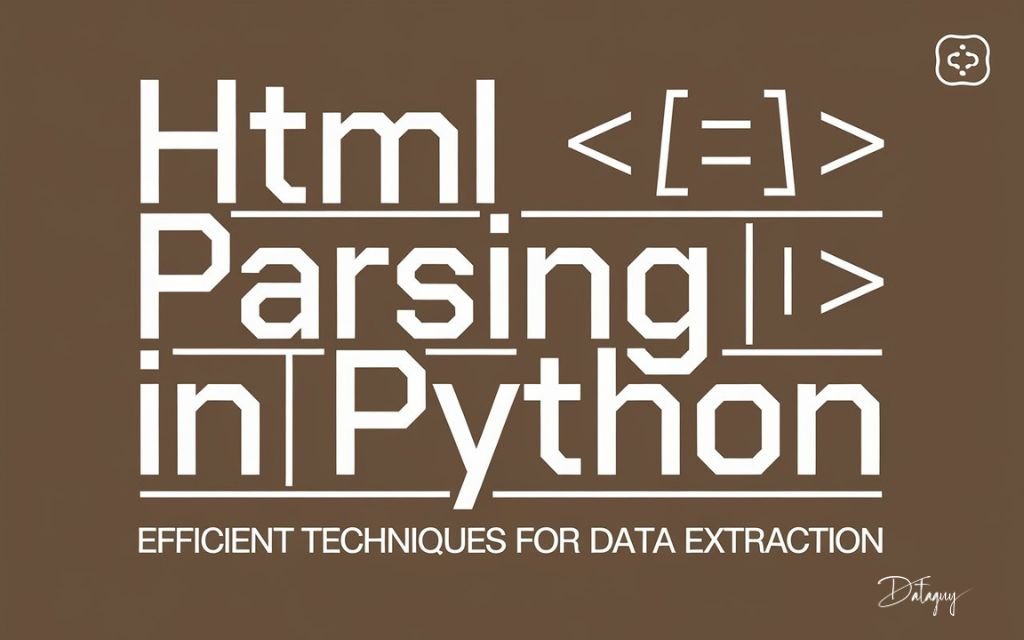Insights Index
ToggleHow to Parse HTML Inside a String Object Using Python
Parsing HTML within a string object is a common requirement when working with web data, whether you’re extracting information, cleaning content, or manipulating text. Python offers several tools that make parsing HTML easy and efficient. In this article, we’ll explore how to parse HTML within a string object using Python, and we’ll use a creatively designed example—a poem about the importance of parsers.
Why Parse HTML in Python?
HTML parsing is essential for web scraping, data extraction, and content manipulation. By parsing HTML, you convert it into a more structured and manageable format, enabling easy data processing and analysis within your Python projects.
Example: The Parser’s Creed (HTML String)
Let’s start with a string object that contains an HTML-formatted poem titled “The Parser’s Creed”. This poem emphasizes the significance of parsers in the programming world.
html_poem = """
<div>
<h1>The Parser's Creed</h1>
<p>In the world of data vast and wide,</p>
<p><strong>A parser</strong> stands as <em>our faithful guide</em>.</p>
<p>It <span style="color:blue;">sifts through tags</span>, both old and new,</p>
<p>And brings the <u>purest</u> data into view.</p>
<p>From <a href="#">web pages</a> with their tangled code,</p>
<p>To XML <code>nodes</code> in structured mode,</p>
<p><strong>The parser</strong> works with steady hand,</p>
<p>Making sense of data, so we understand.</p>
<blockquote>
<p>"A world without parsers would be lost,</p>
<p>In <i>chaos</i> and <u>confusion</u>, at what cost?"</p>
</blockquote>
<p>So let us <a href="#">praise</a> the <em>parser's might</em>,</p>
<p>For turning darkness into light.</p>
<p>In every <strong>line of code</strong> it reads,</p>
<p><span style="color:green;">The parser</span> <u>triumphs</u>, it succeeds!</p>
</div>
"""This string includes various HTML elements such as headings, paragraphs, strong and emphasized text, links, blockquotes, and more, making it an ideal candidate for demonstrating different parsing techniques.
Method 1: Using Regular Expressions
For simple HTML parsing tasks, regular expressions can be quite effective. Below is an example of how to use regex to remove HTML tags from the poem and extract plain text.
import re
clean_text = re.compile(r'<[^>]+>').sub('', html_poem)
print(clean_text)Output:
The Parser's Creed
In the world of data vast and wide,
A parser stands as our faithful guide.
It sifts through tags, both old and new,
And brings the purest data into view.
From web pages with their tangled code,
To XML nodes in structured mode,
The parser works with steady hand,
Making sense of data, so we understand.
"A world without parsers would be lost,
In chaos and confusion, at what cost?"
So let us praise the parser's might,
For turning darkness into light.
In every line of code it reads,
The parser triumphs, it succeeds!Pros:
- Simple and quick.
- No external libraries required.
Cons:
- Not suitable for handling complex or deeply nested HTML.
Method 2: Using BeautifulSoup
BeautifulSoup is a widely-used library for parsing HTML and XML documents. It provides a more flexible and robust way to extract and manipulate HTML content.
from bs4 import BeautifulSoup
soup = BeautifulSoup(html_poem, 'html.parser')
clean_text = soup.get_text()
print(clean_text)Output:
The Parser's Creed
In the world of data vast and wide,
A parser stands as our faithful guide.
It sifts through tags, both old and new,
And brings the purest data into view.
From web pages with their tangled code,
To XML nodes in structured mode,
The parser works with steady hand,
Making sense of data, so we understand.
"A world without parsers would be lost,
In chaos and confusion, at what cost?"
So let us praise the parser's might,
For turning darkness into light.
In every line of code it reads,
The parser triumphs, it succeeds!Pros:
- Handles complex HTML with ease.
- Allows for navigating, searching, and modifying the parse tree.
Cons:
- Requires the
beautifulsoup4library.
Method 3: Using lxml
For large-scale or performance-critical applications, lxml is an excellent choice. It’s fast, efficient, and ideal for parsing both HTML and XML.
from lxml import html
tree = html.fromstring(html_poem)
clean_text = tree.text_content()
print(clean_text)Output:
The Parser's Creed
In the world of data vast and wide,
A parser stands as our faithful guide.
It sifts through tags, both old and new,
And brings the purest data into view.
From web pages with their tangled code,
To XML nodes in structured mode,
The parser works with steady hand,
Making sense of data, so we understand.
"A world without parsers would be lost,
In chaos and confusion, at what cost?"
So let us praise the parser's might,
For turning darkness into light.
In every line of code it reads,
The parser triumphs, it succeeds!Pros:
- Extremely fast and memory-efficient.
- Suitable for both HTML and XML parsing.
Cons:
- Requires the
lxmllibrary, which has a slightly steeper learning curve.
Best Practices for Parsing HTML in Python
- Select the Right Tool: For quick tasks, regex might suffice. For more complex HTML, prefer BeautifulSoup or lxml.
- Sanitize Data: Always clean and validate parsed data to avoid potential security issues.
- Handle Edge Cases: Be prepared for malformed or unexpected HTML structures by implementing error handling.
- Optimize for Performance: For large datasets, consider using lxml for its speed and efficiency.
Conclusion
Parsing HTML inside a string object in Python can be done easily using various tools. Whether you choose regular expressions for simplicity, BeautifulSoup for flexibility, or lxml for performance, Python offers robust solutions to meet your needs. By following the methods and best practices outlined in this article, you’ll be well-equipped to parse and manipulate HTML content efficiently.

